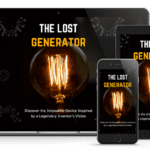E-marketing isn’t just an option. It’s a must. If your business wants to grow, attract new customers, and boost sales, you need solid online marketing tactics. The internet has transformed how we do business—thanks to more people shopping online and spending time on social media. So, how do you stand out among the competition? This article covers the best e-marketing strategies that can get more visitors to your site, turn them into buyers, and increase your ROI.
Understanding the Fundamentals of E-Marketing
The Evolution of Digital Marketing
Digital marketing has grown a lot over the years. It started with simple emails and basic websites. Today, it involves complex tools like social media, content marketing, and automation. Major milestones like Google’s search algorithm updates and social media platforms’ rise have shaped how businesses reach customers online. The trend now is toward more personalized, targeted content that speaks directly to individual needs.
The Digital Consumer Behavior
Knowing what online customers want makes a big difference. Today’s shoppers are looking for quick answers and relevant content. They prefer personalized experiences, whether shopping on Amazon or scrolling Instagram. Data shows that consumers are more likely to buy from brands that offer tailored content. Engagement metrics like clicks, likes, and shares help you understand what your audience cares about most.
Setting Clear E-Marketing Goals
Before jumping into tactics, set goals that matter. Make sure they are SMART—Specific, Measurable, Achievable, Relevant, and Time-bound. For example, aim to increase website traffic by 20% in three months or generate 50 new leads per week. Clear goals guide your efforts and help track success.
Content Marketing: Creating Value to Attract and Engage
Developing a Content Strategy
Great content brings your brand to life. Start by understanding who your audience is and what they need at each step of their buying journey. Develop content tailored to their interests. Use a mix of blogs, videos, infographics, and podcasts. This variety keeps your audience engaged and helps deliver your message in different formats.
Search Engine Optimization (SEO)
SEO is the key to making your content found on Google. Begin with deep keyword research—find out what words your potential customers search for. Optimize your pages with relevant keywords, clear headings, and quality backlinks. Think of SEO as a map that helps search engines understand your content. When done right, it can significantly boost your organic traffic. For example, HubSpot grew its traffic by focusing on blog SEO strategies, leading to more leads.
Content Distribution and Promotion
Creating content isn’t enough. You need to push it out to reach your audience. Use social media channels like Facebook, Instagram, or LinkedIn to share your posts. Email newsletters can also bring your content directly to interested readers. Syndicate your blog posts on relevant platforms to maximize exposure. The goal is to put your content where your audience is already active.
Social Media Marketing: Building Brand Awareness and Loyalty
Platform Selection and Strategy
Not all social platforms are right for every business. Choose the ones where your target customers spend their time most. If you sell visual products like clothes or food, Instagram and Pinterest work well. For B2B services, LinkedIn is the best choice. Once chosen, develop a plan for consistent, engaging content tailored to that platform.
Engaging with Your Audience
Interaction is key. Use live videos, polls, and direct messages to build connections. Share behind-the-scenes looks or industry tips. Nike and Coca-Cola are masters at creating stories that resonate with their fans. When people feel involved, they’re more likely to become loyal customers.
Paid Social Advertising
Organic reach is limited, so use paid ads. Platforms let you target specific groups based on age, location, interests, and more. Well-crafted ads with compelling images and clear calls-to-action make it easier to turn viewers into buyers. Regularly test different ad copies and creatives to identify what works best.
Email Marketing and Automation: Personalized Communication for Better Conversions
Building and Segmenting Email Lists
Your email list is one of your most valuable assets. Grow it with lead magnets like free ebooks or discounts. Use opt-in forms on your website to gather contacts. Once you build the list, segment subscribers based on their preferences or buying history—for example, new vs. loyal customers. Segmentation ensures relevant messages reach the right people.
Campaign Types and Best Practices
Use different email campaigns to reach your audience. Send newsletters that share valuable tips, promotional offers for special sales, or automated drip campaigns to guide leads toward buying. Always test subject lines and email content through A/B testing. Small changes in wording or images can make a big difference in open and click rates.
Marketing Automation Tools
Automation makes your life easier. Platforms like Mailchimp, HubSpot, and ActiveCampaign let you set up workflows that send personalized emails automatically. These tools nurture leads, recover abandoned carts, and keep existing customers engaged. Automation saves time and boosts sales.
Paid Advertising (PPC): Accelerating Growth with Targeted Campaigns
Google Ads and Search Engine Marketing
Google Ads can put your business at the top of search results instantly. Focus on relevant keywords to attract high-intent visitors. Create persuasive ad copy and optimized landing pages. Track your ROI closely, adjusting bids and keywords to maximize results. When campaigns are optimized, you get more visitors who are ready to buy.
Social Media Ads
Paid ads on Facebook, Instagram, and LinkedIn allow precise targeting. For example, LinkedIn is perfect for B2B companies, while Instagram appeals to younger audiences. Experiment with different ad types—images, videos, carousel ads—to see which performs best. Successful campaigns can generate quality leads and sales quickly.
Retargeting and Remarketing
Many visitors leave without converting the first time. Retargeting helps you stay top of mind. Show ads to visitors who viewed your products but didn’t buy. Well-placed retargeting ads can remind them of your offerings and bring them back. It’s a proven way to increase conversion rates and customer lifetime value.
Data Analytics and Performance Tracking
Essential Metrics to Monitor
Track key numbers like website visitors, bounce rates, conversion rates, and customer acquisition costs. Tools like Google Analytics and social media insights give you the data needed to understand what’s working. Use this info to make better decisions and improve your strategies.
Data-Driven Decision Making
Numbers don’t lie. When you analyze your data regularly, you can spot trends and adjust your tactics accordingly. For example, if a particular blog post drives traffic, create more similar content. Using numbers to guide your actions leads to better results and higher ROI.
A/B Testing and Continuous Improvement
Always test new ideas. Change one element at a time—such as your ad headline or CTA—and measure the impact. This helps you learn what resonates most with your audience. Consistent testing ensures your marketing keeps improving over time.
Conclusion
Effective e-marketing combines several tactics to grow your business online. Content marketing, social media, email campaigns, paid ads, and data analysis all work together. The secret is to stay flexible and keep learning from your results. Focus on creating valuable content, engaging your audience, and making data-driven decisions. Remember, the best online marketing is a continuous effort—review and adjust your strategy often to stay ahead. Your success depends on turning visitors into loyal customers and using every tool available to boost your growth.









